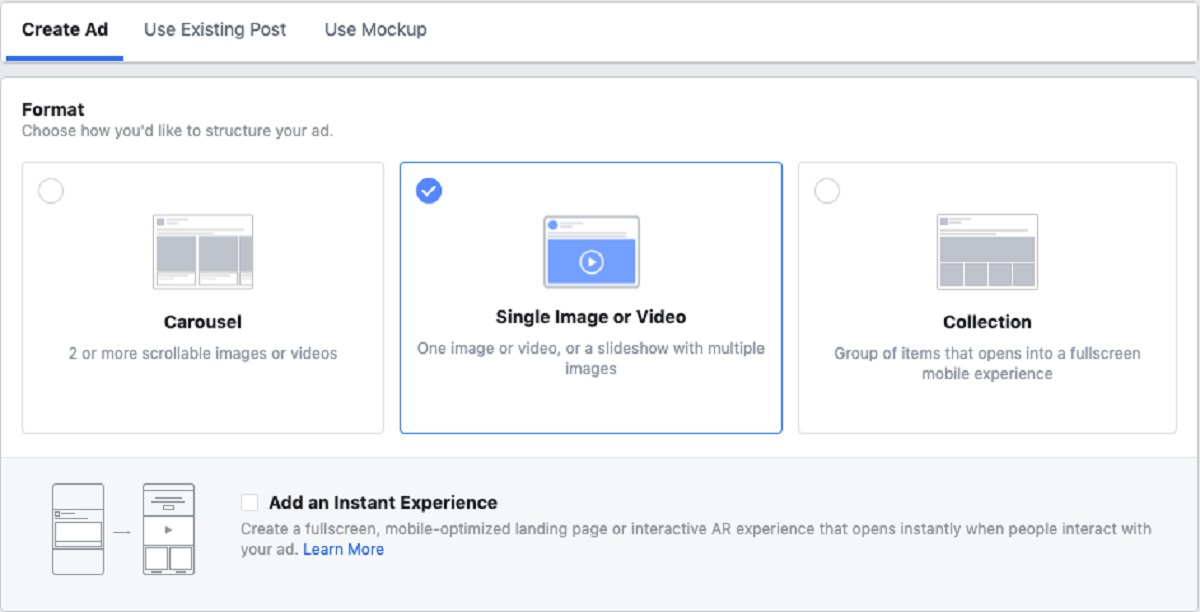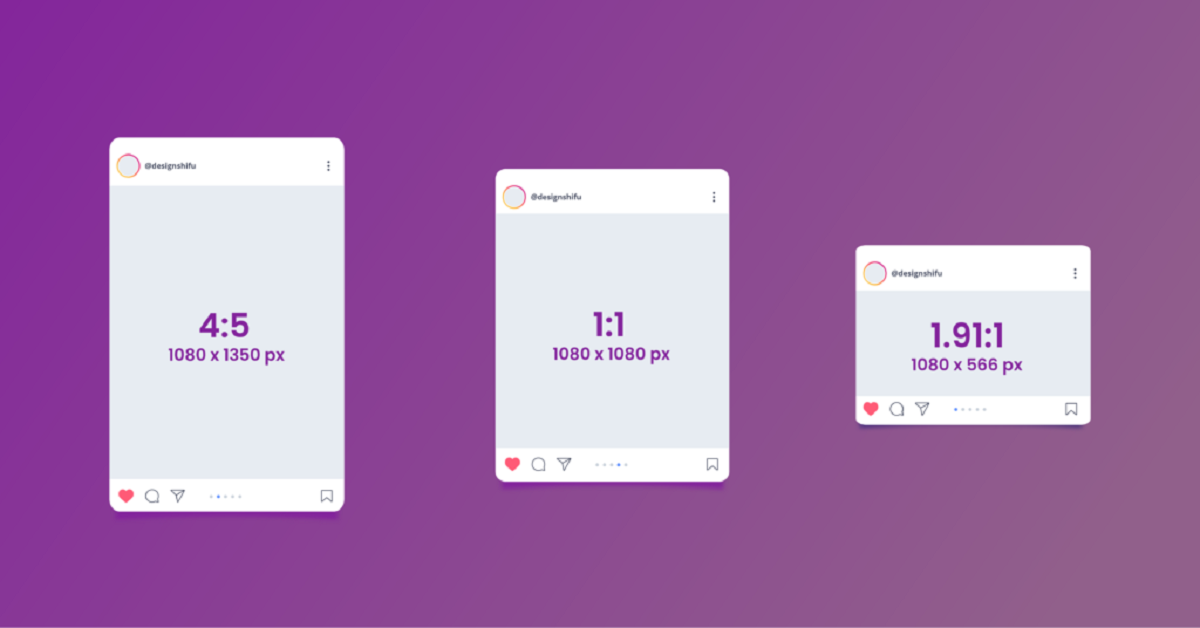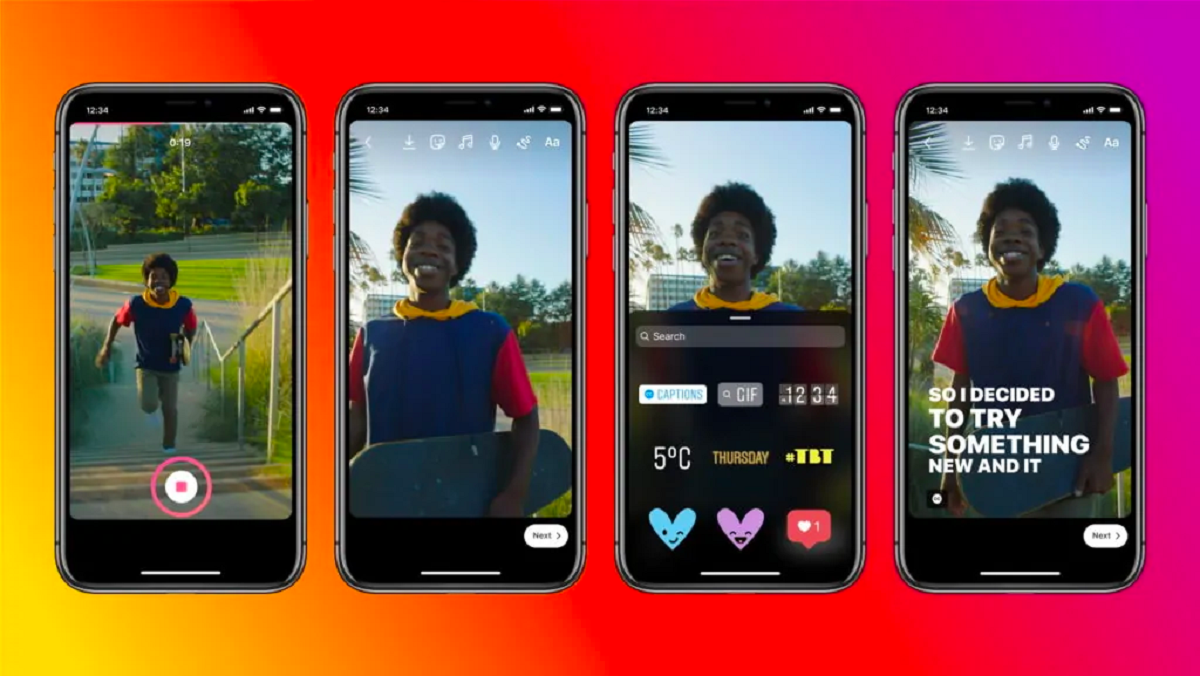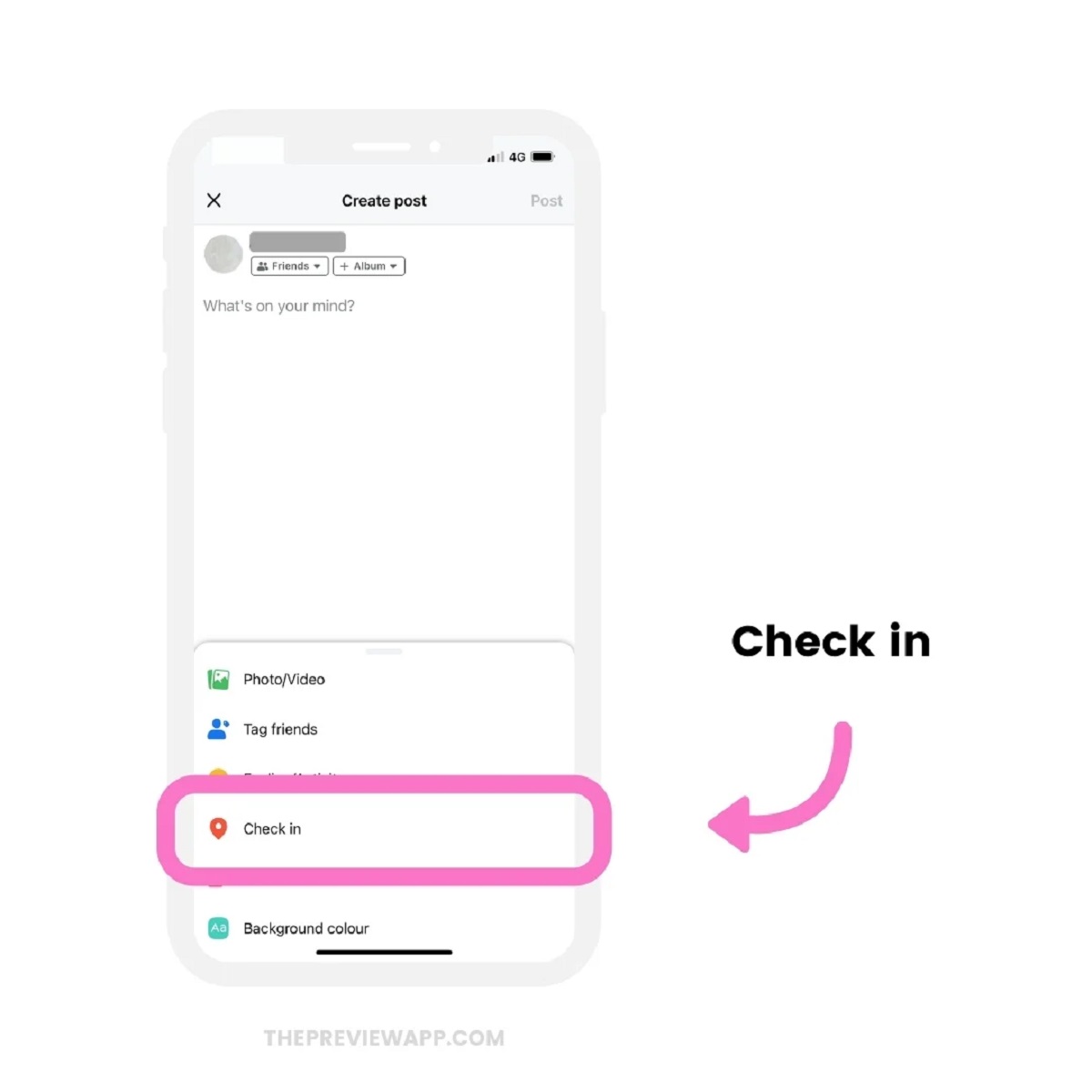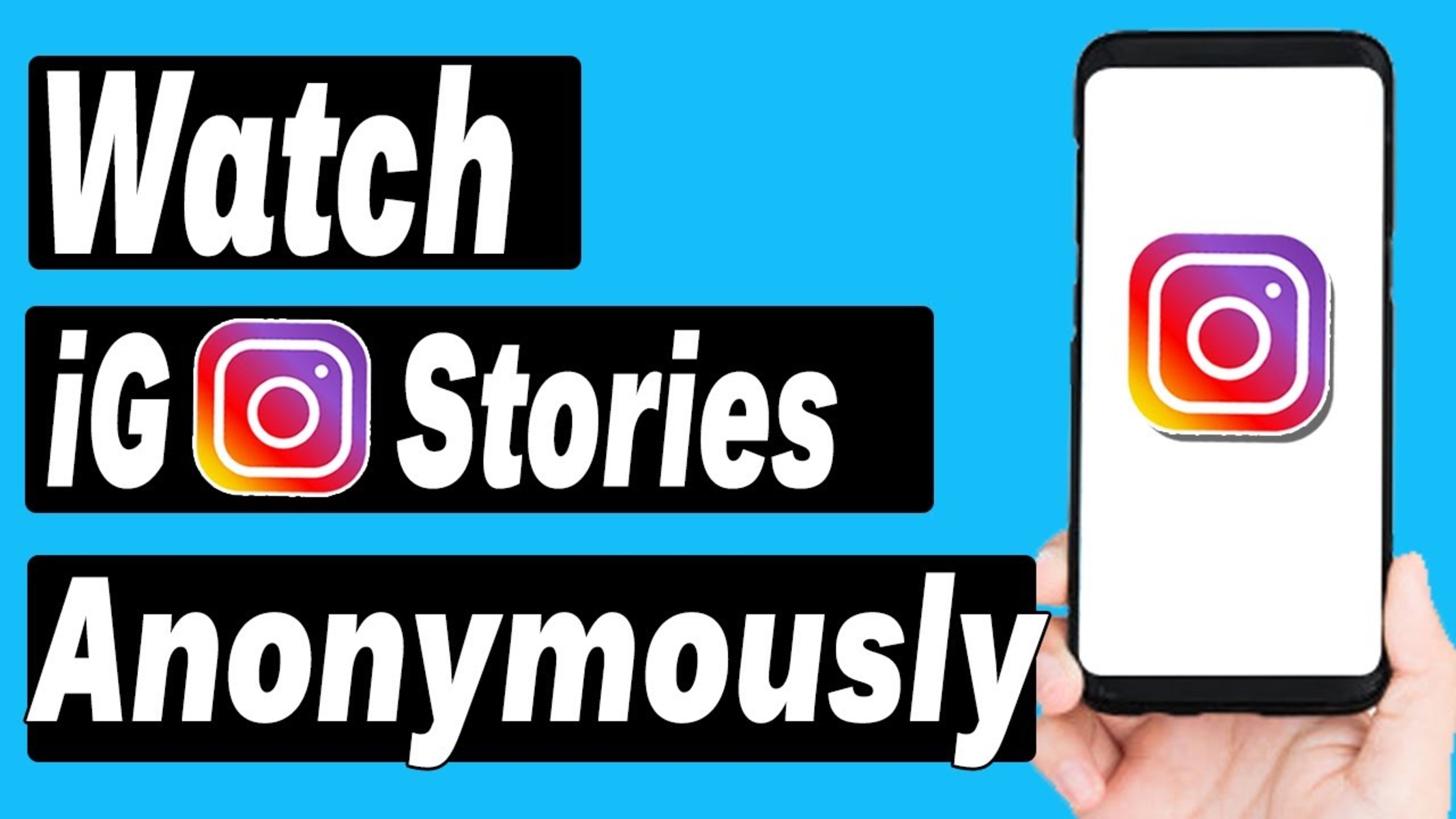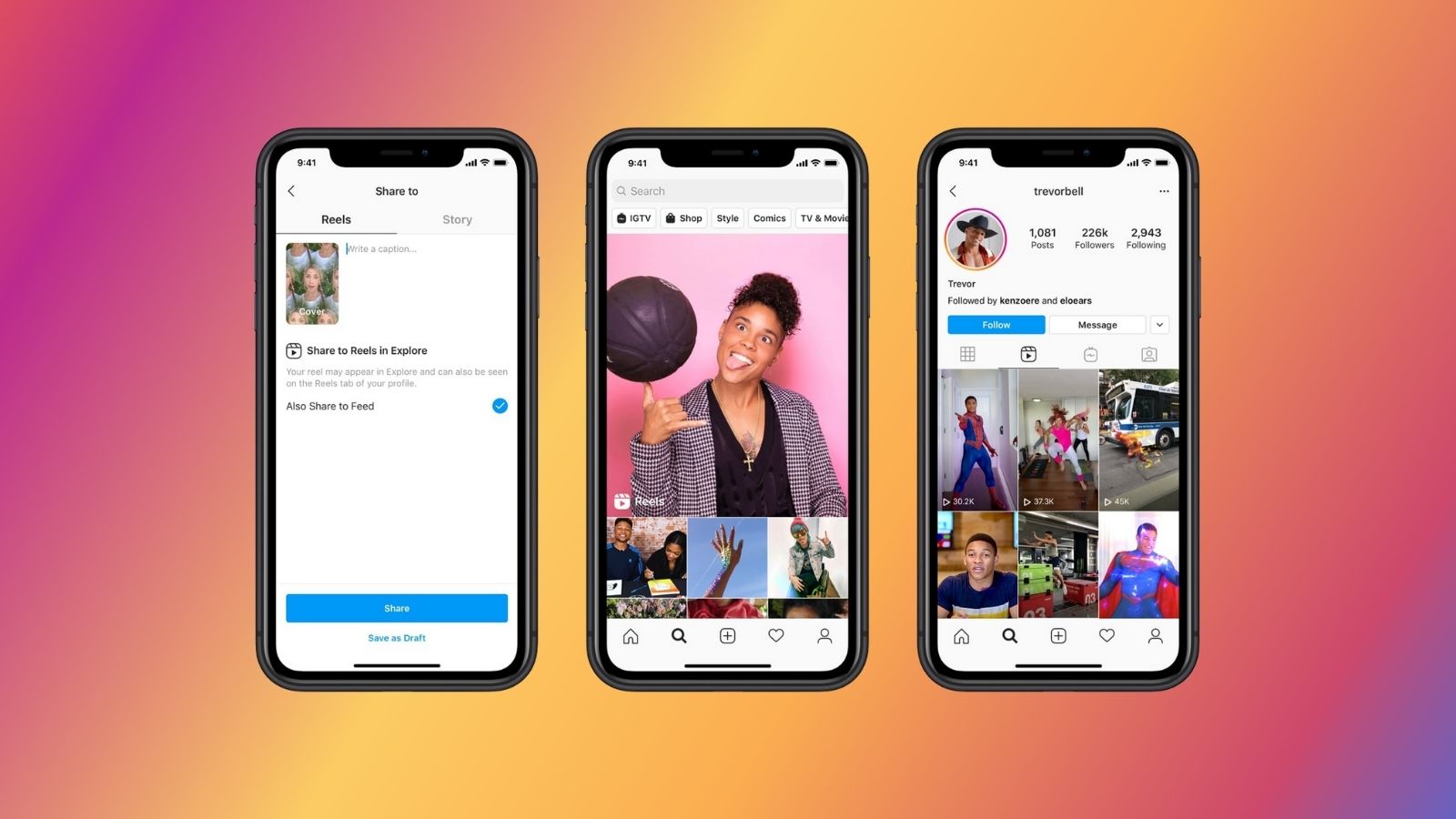Introduction
Instagram has become one of the most popular social media platforms in the world, with over one billion active users. Its visually focused interface and massive user base make it an ideal platform for businesses to reach and engage with their target audience. If you’re looking to promote your products or services, one effective way to do so is by creating ads on Instagram.
Instagram ads offer a unique opportunity to showcase your brand and connect with potential customers in a visually compelling way. With a variety of ad formats and targeting options, you can tailor your ad campaigns to reach specific demographics and increase brand awareness, traffic, and conversions.
In this article, we will guide you through the process of creating ads on Instagram. We will walk you through setting up a business account, understanding the different ad formats, defining your target audience, setting a budget, designing effective ad creatives, reviewing and publishing your ads, and monitoring their performance. By the end of this guide, you’ll have all the knowledge you need to run successful ad campaigns on Instagram.
Whether you’re a small business owner, a marketer, or an aspiring influencer, Instagram advertising can help you reach a wider audience and achieve your marketing goals. So, let’s dive into the world of Instagram ads and discover how you can leverage this powerful platform to grow your business or personal brand.
Setting up an Instagram Business Account
Before you can start running ads on Instagram, you need to have a business account. If you already have a personal account on Instagram, you can easily convert it into a business account. Here’s how:
- Open the Instagram app on your mobile device and go to your profile page.
- Tap on the three horizontal lines at the top right corner to open the menu.
- Select “Settings” from the menu.
- Scroll down and tap on “Account.”
- Tap on “Switch to Professional Account.”
- Choose the “Business” option and follow the prompts to connect your account with your Facebook Page.
- Complete the required information for your business profile, including contact information, category, and bio.
- Once you’ve set up your business account, you can now access Instagram’s advertising features.
Having a business account on Instagram provides several benefits. It allows you to access insights and analytics about your followers, content performance, and ad campaigns. Additionally, it enables you to add contact buttons to your profile, giving users an easy way to contact your business.
Once your business account is set up, it’s essential to optimize your profile. Choose a profile picture that represents your brand, write a compelling bio that tells users what you do, and include a link to your website or a specific landing page. Remember to keep your profile consistent with your brand’s visual identity to create a cohesive and professional look.
Now that you have your Instagram business account in place, you’re ready to explore the various ad formats and start creating engaging ads that will captivate your target audience.
Understanding Instagram’s Ad Formats
Instagram offers a variety of ad formats to choose from, allowing you to showcase your products or services in creative and engaging ways. Each ad format serves a different purpose and caters to different marketing objectives. Here are the main ad formats available on the platform:
- Photo Ads: Photo ads are simple yet effective. They feature a single image in square or landscape format and are ideal for visually showcasing your products or brand. Use high-quality, eye-catching images that grab the viewer’s attention.
- Video Ads: Video ads on Instagram allow you to tell a story and engage your viewers through motion and sound. You can create videos up to 60 seconds long and utilize features like captions and calls-to-action to enhance the ad’s effectiveness.
- Carousel Ads: Carousel ads enable you to showcase multiple images or videos within a single ad. Users can swipe through the carousel to view more content, giving you the opportunity to highlight different product features, showcase a collection, or tell a sequential story.
- Stories Ads: Instagram Stories ads appear in between users’ stories and offer a full-screen immersive experience. With features like stickers, filters, and interactive elements, Stories ads allow you to engage and capture the attention of viewers in a more interactive way.
- Explore Ads: Explore ads appear in the Explore feed, which is where users discover new content based on their interests. These ads blend seamlessly with organic content and can help you reach users who are actively exploring and discovering new brands and products.
When choosing an ad format, consider your marketing goals, target audience, and the nature of your products or services. Experiment with different formats to see which ones resonate best with your audience and drive the desired results.
It’s important to note that Instagram also offers various ad placement options, such as in-feed ads, story ads, and explore ads. You can choose to run your ads on Instagram only or extend their reach to Facebook’s ad network, including Messenger and Audience Network.
Now that you have an understanding of the different ad formats available on Instagram, you can select the most suitable format for your ads and begin crafting captivating visuals and compelling messages to attract and engage your target audience.
Creating an Instagram Ad Campaign
Creating a successful Instagram ad campaign requires careful planning and strategizing. By following a step-by-step process, you can ensure that your ads effectively reach your target audience and drive the desired results. Here’s how you can create an Instagram ad campaign:
- Define your campaign objectives: Start by clearly defining your campaign objectives. Do you want to increase brand awareness, drive website traffic, generate leads, or boost sales? Having a clear objective will help you determine the most suitable ad format, targeting options, and call-to-action for your ads.
- Set up your campaign in Ads Manager: Head to Facebook Ads Manager to create your ad campaign. Select the “Campaigns” tab and click on the “+ Create” button. Choose the objective that aligns with your campaign objective, such as “Brand Awareness” or “Conversions.” Set up your campaign budget and schedule.
- Select your ad creative: Choose the ad format that aligns with your objectives and select appealing images or videos that will catch the attention of your target audience. Ensure that your visuals are high-quality, on-brand, and relevant to your campaign message.
- Create engaging ad copy: Craft compelling ad copy that clearly communicates the value proposition of your product or service. Use concise and persuasive language to entice viewers to take action. Incorporate relevant keywords and a strong call-to-action to encourage users to click or engage with your ad.
- Target your audience: Define your target audience based on demographics, interests, behaviors, and other relevant criteria. By reaching the right people, your ads will have a higher chance of resonating with your audience and driving the desired actions.
- Choose your ad placement: Decide where you want your ads to appear – whether it’s in users’ feeds, Instagram Stories, or the Explore feed. You can also choose the automatic placement option, allowing Facebook to optimize your ad delivery across different placements.
- Optimize your ad delivery: Select the most relevant optimization options, such as bid strategy, delivery optimization, and scheduling. These options will help you maximize the performance of your ads and ensure they are shown to the most receptive audience.
- Review and publish: Before finalizing your ad campaign, review all the details, including visuals, ad copy, targeting options, and budget. Make any necessary edits or adjustments, and then click on the “Publish” or “Submit” button to launch your campaign.
Once your Instagram ad campaign is live, make sure to regularly monitor its performance, make data-driven adjustments if necessary, and optimize your ads based on the insights you gather. This will help you continuously improve the effectiveness and impact of your campaigns.
By following these steps, you can create a well-structured and targeted ad campaign on Instagram that effectively promotes your brand and achieves your marketing objectives.
Choosing the Right Objective for Your Ad
When creating an ad on Instagram, it’s crucial to choose the right objective that aligns with your overall marketing goals. Instagram offers a range of objectives that cater to different stages of the customer journey and desired outcomes. Here are some common objectives you can choose from:
- Brand Awareness: If your goal is to increase the visibility and recognition of your brand, choose the “Brand Awareness” objective. This objective focuses on reaching a wide audience and maximizing ad impressions.
- Reach: The “Reach” objective aims to expose your ad to as many unique users as possible within your target audience. It’s an ideal choice if you want to ensure that your message reaches a broad audience.
- Traffic: If you want to drive traffic to your website or a specific landing page, select the “Traffic” objective. This objective will optimize your ads for click-throughs and encourage users to visit your website.
- Engagement: The “Engagement” objective is suitable if you want to encourage users to engage with your ads, such as liking, commenting, or sharing your posts. It’s an effective choice for increasing user interaction and social proof.
- Conversions: For driving specific actions, such as form submissions, purchases, or app installations, choose the “Conversions” objective. This objective utilizes Facebook’s algorithm to optimize for actions that are valuable to your business.
- App Installs: If you have a mobile app and want to increase app installations, the “App Installs” objective is the way to go. This objective focuses on driving app downloads and installations.
- Video Views: If your ad includes a video and your objective is to maximize video views, select the “Video Views” objective. This objective will optimize your ads for reaching users who are more likely to watch your video content.
- Lead Generation: If your goal is to collect valuable information from potential customers, such as email addresses or contact details, the “Lead Generation” objective is the ideal choice. This objective simplifies the process of capturing leads directly within Instagram.
When deciding on the right objective, consider your overall marketing objectives, target audience, and the desired actions you want users to take. Keep in mind that your objective will determine the available ad formats, optimization options, and metrics that you can track.
By selecting the most appropriate objective for your ad campaign, you can maximize the effectiveness and impact of your ads on Instagram, ultimately driving the desired results for your business.
Defining Your Target Audience
Defining your target audience is a crucial step in creating successful Instagram ads. By understanding who your ideal customers are, you can tailor your ads to resonate with their interests, preferences, and behaviors. Here’s how you can define your target audience for your Instagram ad campaign:
- Analyze your existing customer base: Start by taking a close look at your current customer base. Analyze their demographics, such as age, gender, location, and income level. Identify any common characteristics and preferences that stand out.
- Research your competitors: Study your competitors’ target audience. Look at the type of people they are attracting and try to identify any overlaps or gaps in the market. This research can provide valuable insights into potential customer segments.
- Utilize audience insights and analytics: If you already have a business Instagram account, take advantage of the audience insights and analytics available to you. These tools provide valuable data on your followers’ demographics, interests, and behaviors, helping you understand who is engaging with your content.
- Conduct market research: Perform market research to gain a deeper understanding of your target audience. This can include conducting surveys, interviews, or focus groups to gather data on their preferences, pain points, and needs.
- Create buyer personas: Once you have collected all the necessary information, create buyer personas that represent your ideal customers. A buyer persona is a fictional profile that embodies the characteristics of your target audience, including their demographics, interests, goals, and challenges.
- Segment your audience: Depending on the size and diversity of your target audience, consider segmenting them into different groups based on their demographics, behaviors, or preferences. This will allow you to create more targeted and personalized ads that resonate with each segment.
- Testing and optimization: Keep in mind that defining your target audience is an ongoing process. As you run ad campaigns and gather more data, continuously analyze and refine your targeting based on the insights you gain. Testing different audience segments can help you identify which ones respond best to your ads.
By defining your target audience, you can ensure that your Instagram ads are seen by the right people, increasing the chances of engagement and conversion. Remember to keep your target audience in mind when creating your ad creatives, messaging, and ad placement to effectively reach and resonate with your desired customers.
Setting a Budget for Your Ad
Setting a budget for your Instagram ad campaign is crucial to ensure that you get the most out of your advertising investment. By strategically allocating your budget, you can reach your target audience effectively and achieve your marketing goals. Here’s how you can set a budget for your Instagram ad:
- Define your advertising goals: Start by clarifying your advertising goals. Are you looking to increase brand awareness, drive website traffic, generate leads, or boost sales? Identifying your goals will help you determine how much budget you need to allocate for your ad campaign.
- Determine your overall advertising budget: Consider your overall marketing budget and determine how much you are willing to allocate specifically for Instagram advertising. Ensure that your allocated budget aligns with your business objectives and goals.
- Choose your bidding strategy: Instagram offers different bidding strategies, including cost per click (CPC), cost per impression (CPM), and cost per action (CPA). Each bidding strategy has its advantages and should be selected based on your specific campaign objectives and budget constraints.
- Consider the duration of your campaign: Determine the length of your ad campaign. Decide whether you want to run your ads continuously or during specific time periods, such as a holiday season or a product launch. This will impact your budget allocation as well.
- Consider your target audience reach: The size and reach of your target audience can influence your budget. Consider the potential reach of your ad campaign and adjust your budget accordingly to ensure that you reach a significant number of users within your target audience.
- Monitor and optimize your campaign: Regularly monitor the performance of your ads and make data-driven optimizations. Adjust your budget based on the ad performance and the desired outcomes you aim to achieve. Increase budget for well-performing campaigns and decrease budget for underperforming ones.
Remember that finding the right balance between your budget and expected results may require experimentation and testing. It’s often wise to start with a conservative budget and scale it up gradually as you gather data and refine your ad campaign.
Keep in mind that the effectiveness of your ad campaign isn’t solely determined by your budget. Quality ad creatives, audience targeting, and compelling messaging also play critical roles in achieving success. Focus on creating engaging content that resonates with your target audience and amplifies the impact of your budget.
With careful budget planning and continuous monitoring, you can optimize your Instagram ad campaigns and achieve meaningful results within your allocated budget.
Designing Compelling Ad Creatives
The design of your Instagram ad creatives is crucial in capturing the attention of your target audience and driving engagement. Compelling visuals and attention-grabbing content will help your ads stand out in users’ feeds and leave a lasting impression. Here are some tips for designing compelling ad creatives:
- Use high-quality visuals: Ensure that your visuals are high-resolution, clear, and visually appealing. Use professional photographs or graphics that are relevant to your brand and showcase your products or services in the best possible light. Avoid using pixelated or blurry images that may deter users from engaging with your ad.
- Keep it visually consistent with your brand: Maintain a consistent visual style and color scheme that aligns with your brand identity. This consistency helps create brand recognition and enhances the overall impact of your ads. Consider using your brand logo or visual elements to reinforce brand association.
- Focus on compelling and eye-catching elements: Utilize visually appealing elements that capture attention, such as striking colors, bold typography, or intriguing visuals. Incorporate these elements strategically to draw users’ eyes and make them want to learn more about your brand or offering.
- Ensure legibility of text: If your ad includes textual content, make sure it’s easy to read and understand. Select fonts that are clear and legible, even when viewed on mobile devices. Avoid overcrowding your visuals with excessive text, and let the visuals do most of the talking.
- Highlight unique selling points: Clearly communicate your unique selling propositions or key messages in your ad creatives. Showcase what sets your brand apart from the competition and why users should engage with your ad. Use captivating headlines or captions that emphasize the value your products or services offer.
- Create a sense of urgency: Encourage users to take action by creating a sense of urgency in your ad creatives. Incorporate countdowns, limited-time offers, or exclusive promotions to prompt users to act quickly. This can help drive immediate engagement and conversions.
- Consider the mobile experience: Instagram is primarily accessed on mobile devices, so design your ad creatives with mobile users in mind. Optimize your visuals to fit mobile screens, ensuring that important elements are visible and easily clickable. Test your ad creatives on different mobile devices to ensure a seamless user experience.
- A/B test your ad creatives: Experiment with different variations of your ad creatives to see which ones perform the best. Test different visuals, headlines, or calls-to-action to identify the most effective combination. Use the insights gathered from A/B testing to refine and optimize your ad creatives.
Remember that Instagram is a highly visual platform, so investing time and effort into designing compelling ad creatives is crucial for capturing and retaining users’ attention. Strive for a balance between creativity, aesthetics, and conveying your brand message effectively in order to create impactful Instagram ad campaigns.
Adding Captivating Text and Call-to-Actions
While visuals play a crucial role in Instagram ad creatives, the text accompanying your ads is equally important in capturing the attention and driving action from your audience. Compelling and concise text, along with a strong call-to-action (CTA), can significantly increase the effectiveness of your ads. Here’s how you can add captivating text and CTAs to your Instagram ads:
- Create a compelling headline: Craft a short and attention-grabbing headline that quickly communicates the key message or value proposition of your ad. Make it compelling and compelling, enticing users to stop scrolling and pay attention to your ad.
- Keep your captions concise: Instagram users have short attention spans, so keep your captions brief and to the point. Use concise language to communicate your message effectively and avoid overwhelming users with lengthy paragraphs. Use line breaks and emojis to make your captions visually appealing and easy to skim through.
- Capture interest with storytelling: Engage your audience by telling a compelling story or narrative in your ad text. Use captivating language that evokes emotions or sparks curiosity. By connecting with your audience on an emotional level, you can make a lasting impression and encourage them to take action.
- Highlight the benefits: Clearly communicate the benefits or solutions that your products or services provide to the audience. Focus on what sets your brand apart and how it can improve the lives of your target audience. By highlighting the benefits, you can pique users’ interest and motivate them to engage further.
- Create a sense of urgency: Add a sense of urgency to your ad text by using words and phrases that create a fear of missing out (FOMO). Limited-time offers, exclusive deals, or countdowns can motivate users to take immediate action, increasing the chances of conversion.
- Incorporate strong CTAs: A strong and clear CTA is essential in driving user action. Use action verbs like “Shop Now,” “Learn More,” “Sign Up,” or “Book Now” to tell users what you want them to do next. Ensure that your CTA is prominent and easily clickable, leading users to the desired destination, such as your website or landing page.
- Use hashtags strategically: Incorporate relevant hashtags in your ad text to expand the reach of your ads and enable users to discover your content through keyword searches. Research popular and trending hashtags within your industry or niche to ensure maximum visibility.
- Experiment with emojis: Emojis can add visual appeal and personality to your ad text. Incorporate emojis that align with your brand voice and resonate with your target audience. However, use them sparingly and ensure they enhance the message rather than overpowering it.
- A/B test your ad text and CTAs: Conduct A/B tests with different variations of your ad text and CTAs to identify what resonates best with your audience. Test different combinations of headlines, captions, and CTAs to optimize the performance of your ads.
By adding captivating text and strong CTAs to your Instagram ads, you can effectively engage your audience, drive action, and achieve your marketing objectives. Constantly experiment, analyze the performance of your ad text and CTAs, and make data-driven optimizations to improve the effectiveness of your ad campaigns.
Reviewing and Publishing Your Instagram Ad
Before publishing your Instagram ad, it’s crucial to thoroughly review and ensure that everything is in order. Taking the time to review your ad ensures that it meets your campaign objectives, adheres to Instagram’s advertising policies, and is optimized for maximum effectiveness. Here are the steps to review and publish your Instagram ad:
- Double-check your ad content: Review all aspects of your ad, including the visuals, captions, and call-to-action (CTA). Ensure that everything is accurate, compelling, and aligns with your campaign goals. Verify that your ad content matches the landing page or destination you want users to visit.
- Ensure compliance with Instagram’s guidelines: Familiarize yourself with Instagram’s advertising policies and guidelines. Make sure your ad content complies with the platform’s rules and regulations, including restrictions on prohibited content, misleading claims, or inappropriate imagery. Failure to adhere to these guidelines may result in your ad being rejected or your account being penalized.
- Check the targeting settings: Review the targeting settings you have selected for your ad campaign. Ensure that you have defined your target audience correctly and that your ad is reaching the intended demographic or interest group.
- Verify the budget and schedule: Double-check your budget and schedule to ensure they align with your campaign objectives and timeline. Confirm that you have allocated an appropriate budget to achieve your desired reach and impressions. Make any necessary adjustments before proceeding.
- Preview your ad: Take advantage of the preview feature available in the Facebook Ads Manager or Instagram Ads Manager. Preview your ad on different devices (mobile and desktop) to see how it will appear to users. Ensure that the visuals, text, and CTA are clear and visually appealing across various screen sizes.
- Run a final test: Conduct a final test by going through the entire user journey of your ad. Click on the CTA to ensure it directs users to the correct landing page, form, or app installation. Verify that tracking codes, pixel integrations, or tracking URLs are functioning correctly for accurate performance measurement.
- Click the publish button: Once you are confident that your ad is properly reviewed, click the publish button to launch your ad campaign. Be aware that it may take a short period for your ad to be reviewed and approved by Instagram before it goes live. In the meantime, closely monitor its status in the Ads Manager.
Remember that effective ad campaigns require ongoing monitoring and optimization. Once your ad is live, regularly review the performance metrics, such as impressions, clicks, and conversions. Analyze the data and make necessary adjustments to improve the performance and achieve your desired outcomes.
By thoroughly reviewing and publishing your Instagram ad with careful attention to detail, you can ensure that your ads are optimized, compliant, and ready to captivate your target audience.
Monitoring and Analyzing Ad Performance
Monitoring and analyzing the performance of your Instagram ads is essential to ensure that your campaign is on track and meeting your goals. By closely monitoring the performance metrics and analyzing the data, you can make data-driven decisions and optimize your ads for maximum impact. Here’s how you can effectively monitor and analyze the performance of your Instagram ads:
- Define key performance indicators (KPIs): Clearly define the KPIs that align with your campaign objectives. These could include metrics such as impressions, reach, engagement (likes, comments, shares), click-through rates (CTR), conversion rates, or return on ad spend (ROAS).
- Monitor real-time data: Use the reporting tools available in Facebook Ads Manager or Instagram Ads Manager to track the real-time performance of your ads. Monitor metrics such as impressions, reach, clicks, and conversions to get a snapshot of how your ads are performing.
- Compare against benchmarks and goals: Compare your ad performance metrics against industry benchmarks and your own campaign goals. This will help you understand how your ads are performing relative to expectations and industry standards.
- Segment data by different factors: Segment your performance data by different factors such as demographics, devices used, geographic location, or interests. By analyzing data across various segments, you can gain insights into which audience segments are responding most favorably to your ads.
- Identify patterns and trends: Look for patterns, trends, and correlations within your performance data. Identify any factors or strategies that are driving positive results or causing drop-offs in performance. For example, you may notice that certain times of day or days of the week are more effective in generating engagement or conversions.
- Perform A/B testing: Conduct A/B tests with different variations of your ad elements, such as visuals, ad copy, or CTAs. Compare the performance of the different variations to identify which ones resonate best with your audience and drive the desired outcomes.
- Optimize based on insights: Utilize the insights gathered from your data analysis to optimize your ad campaigns. Make strategic adjustments to your targeting, budget allocation, ad creatives, and messaging to improve performance and achieve your desired objectives.
- Review ad frequency and fatigue: Keep an eye on your ad frequency, which indicates how often users are seeing your ads. If frequency is too high, users may become fatigued, leading to ad performance decline. Consider refreshing your ad creatives or adjusting your targeting to avoid ad fatigue.
- Continuously fine-tune and experiment: Learning from your ad performance data is an iterative process. Continuously fine-tune your campaigns and experiment with different strategies and approaches based on the insights you gather. Test new audiences, messaging, or ad formats to uncover new opportunities for optimization and growth.
By actively monitoring and analyzing the performance of your Instagram ads, you can effectively optimize your campaigns and maximize their impact. Stay proactive in your data analysis and use the insights gained to make informed decisions that will drive better results for your advertising efforts.
Tips for Successful Instagram Advertising
Instagram advertising can be a powerful tool for growing your business and engaging with your target audience. To make the most out of your Instagram ad campaigns, consider implementing the following tips:
- Know your audience: Take the time to understand your target audience’s preferences, interests, and behavior on Instagram. This knowledge will enable you to create more targeted and relevant ads that resonate with your audience.
- Create visually appealing content: Instagram is a visual platform, so it’s crucial to have high-quality and eye-catching visuals. Invest in professional photography, design compelling graphics, and make sure your visuals align with your brand identity.
- Optimize your ad formats: Experiment with different ad formats such as photo ads, video ads, carousel ads, and Instagram Stories ads to find out which ones are most effective for your objectives. Tailor your content to suit each format and leverage their unique features.
- Craft compelling captions: Pair your visuals with engaging captions that grab attention and inspire action. Use persuasive language, storytelling techniques, and call-to-action prompts to encourage users to engage with your ads.
- Test and refine your targeting: Continuously test and refine your target audience settings to ensure that your ads are reaching the most relevant users. Experiment with different demographics, interests, and behaviors to optimize your audience targeting.
- Utilize Instagram Stories: Leverage Instagram Stories ads to connect with your audience in a more immersive and interactive way. Take advantage of features such as stickers, polls, and swipe-up links to engage viewers and drive actions.
- Keep your messaging concise: Instagram users have short attention spans, so keep your messaging concise and focused. Be clear about the value proposition of your products or services and communicate it succinctly.
- Monitor and evaluate your ad performance: Regularly review and analyze the performance data of your ad campaigns. Pay attention to metrics such as impressions, engagement rate, reach, and conversions to understand what’s driving success and where improvements can be made.
- Engage with your audience: Respond to comments, messages, and mentions from users interacting with your ads. Build a relationship with your audience by replying promptly, offering assistance, or simply thanking them for their engagement.
- Stay consistent with your brand: Maintain consistency in your visual style, messaging, and branding across all your Instagram ads. This consistency will help build brand recognition and trust among your audience.
- Stay up to date with Instagram’s features and trends: Instagram is constantly evolving, so it’s important to stay informed about new features, updates, and trends. Stay proactive and adapt your ad strategies to leverage the latest tools and opportunities.
By incorporating these tips into your Instagram advertising strategy, you can enhance the effectiveness of your ad campaigns and achieve your marketing goals on the platform.
Conclusion
Instagram advertising presents a valuable opportunity to connect with your target audience, increase brand visibility, and drive desired actions. By following the steps outlined in this guide, you can create compelling ad campaigns that captivate your audience and achieve your marketing objectives.
Setting up an Instagram Business Account is the first step towards running ads on the platform. Understanding the various ad formats available allows you to choose the most suitable format for your campaign goals. Defining your target audience ensures that your ads are reaching the right people, while setting a budget allows you to allocate your resources effectively.
Designing compelling ad creatives, including captivating text and strong call-to-actions, are crucial for grabbing users’ attention and prompting them to engage with your ads. Reviewing and publishing your ads requires attention to detail to ensure accuracy and compliance with Instagram’s advertising policies.
Once your ads are live, monitoring and analyzing their performance will help you make data-driven decisions and optimize your campaigns for better results. Continuous optimization, experimenting, and staying up-to-date with Instagram’s features and trends will ensure that your ad campaigns remain effective and impactful.
Remember, Instagram advertising is a dynamic and ever-evolving field, so it’s important to stay flexible, adapt to changes, and leverage the platform’s full potential. By implementing the tips and strategies shared in this guide, you can create successful Instagram ad campaigns that elevate your brand and drive growth.
Now that you have the knowledge and tools at your disposal, it’s time to get started with your Instagram advertising journey. Engage your audience, showcase your brand, and watch your business thrive on this visually captivating platform.







